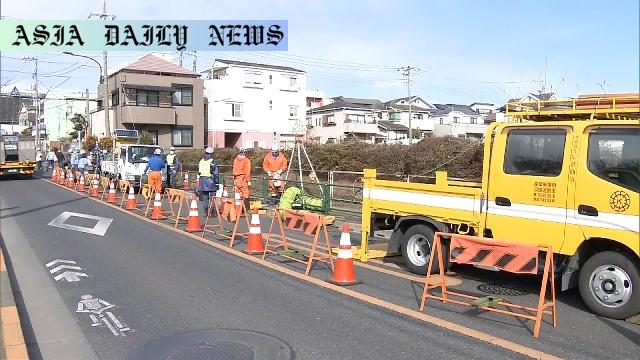Sewage pipe inspection reveals corrosion and critical cavities in Saitama, highlighting immediate need for infrastructure repairs.
Emergency inspection finds problems in three sewage pipe locations across Saitama Prefecture.
Cavities unrelated to sewage but needing urgent repair discovered at eight locations.
Inspections cover 1,700 sites in seven prefectures post-Yashio City sinkhole incident.
Government plans to release findings and propose preventive measures.

Background of the Inspection
The aftermath of a massive sinkhole in Yashio City, Saitama Prefecture, prompted the Japanese government to conduct emergency inspections of sewage pipes across seven prefectures. This urgent initiative aimed to reveal vulnerabilities in existing infrastructure, as the sinkhole was deemed to have been caused by a ruptured sewage pipe. Tragically, a truck driver went missing after falling into the Yashio sinkhole, emphasizing the severity of the incident.
Sewage Pipe Inspections and Findings
The inspections covered approximately 1,700 locations, focusing on pipes with a diameter exceeding two meters that connect to treatment plants capable of processing more than 300,000 tons of sewage daily. Advanced techniques, including visual inspections and electromagnetic wave surveys, were deployed to detect signs of damage or underground anomalies.
Results revealed corrosion and structural issues in three additional locations within Saitama Prefecture. Beyond these, eight underground cavities unrelated to sewage pipes but requiring emergency repairs were also identified, reflecting broader risks in the region’s underground infrastructure.
Next Steps and Preventive Measures
Authorities acknowledge the urgency of addressing these findings to prevent similar incidents. The government plans to release a detailed report outlining the inspection results, coupled with recommendations to fortify infrastructure against future failures. Immediate emergency repairs will target the identified problem sites, with long-term evaluations likely to reform sewage management policies nationwide.
Implications for Infrastructure Safety
This incident illustrates the critical importance of regular maintenance and proactive inspections of aging infrastructure. Urban centers reliant on extensive underground systems are at heightened risk of catastrophic failures when proper upkeep is neglected. Public safety depends heavily on the swift implementation of preventive measures after such alarming findings.
Conclusion
The emergency inspections in Japan reflect both the consequences of infrastructure neglect and the proactive steps needed to address vulnerabilities. Saitama’s case serves as a cautionary tale, urging governments globally to prioritize the maintenance and monitoring of critical systems to safeguard their populations and economies.



Commentary
A Wake-Up Call for Infrastructure Maintenance
The recent revelations about damaged sewage pipes in Saitama, following the catastrophic Yashio City sinkhole, highlight the critical need for vigilance in infrastructure maintenance. The tragedy of a truck driver going missing has sent shockwaves, not just through Japan but to other nations with aging infrastructure. This serves as a sobering reminder that investment in public infrastructure isn’t optional; it’s a matter of public safety.
Proactive Measures as a Priority
What stands out in this incident is the rapid response from Japan’s authorities. Conducting inspections at 1,700 sites immediately after the sinkhole occurrence is commendable. However, the discovery of multiple issues—both in sewage pipes and unrelated cavities—underscores how prolonged oversight can quickly exacerbate into widespread hazards. Governments must view this as a model to proactively address looming infrastructure crises rather than waiting for disasters to strike.
Looking Beyond Repairs
While emergency repairs will resolve immediate threats, this incident calls for a deeper evaluation of policies governing infrastructure maintenance. It may require extensive funding or a reallocation of resources, but such investments will ultimately save lives and prevent larger economic damages in the long run. With advancing technologies like electromagnetic surveying, authorities can detect and prevent such problems more effectively than ever before.
Global Implications and Lessons
Saitama’s experience serves as an important case study for urban centers globally. Rapid urbanization often puts pressure on infrastructure that wasn’t designed to handle such loads for extended periods. By learning from Japan’s decisive action, other governments can develop stricter policies and invest in innovative tools to safeguard their aging systems.